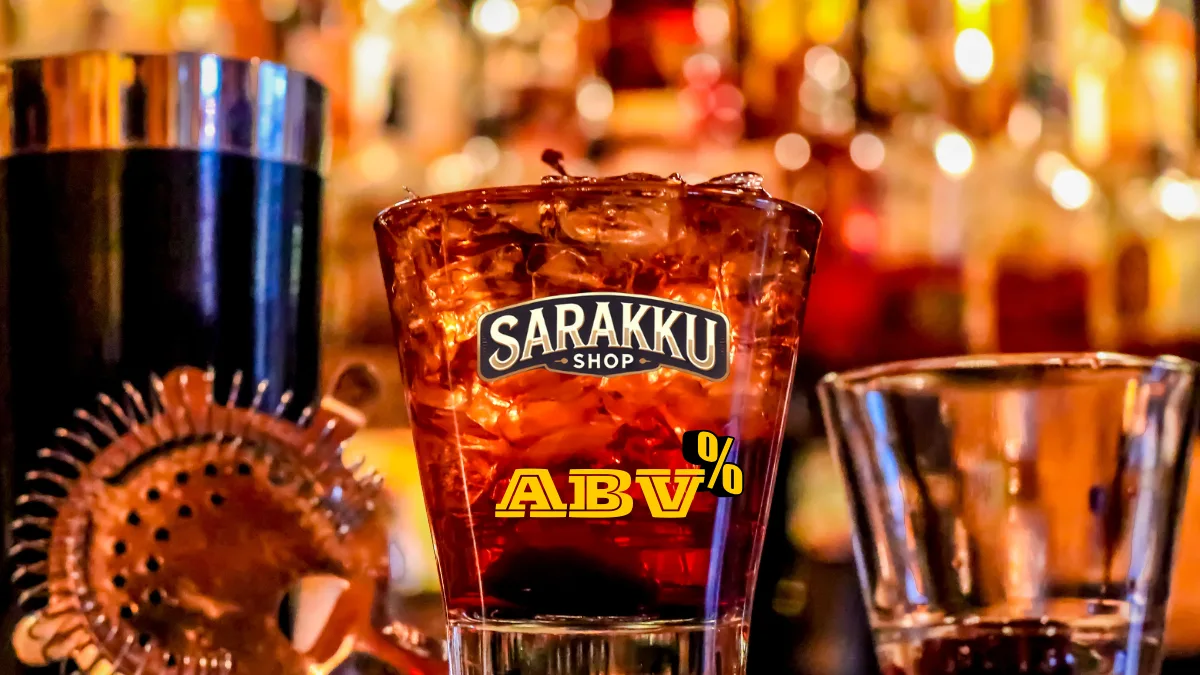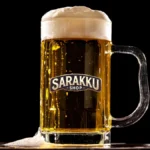Alcohol By Volume (ABV) is a measure of the amount of alcohol (ethanol) in a beverage compared to the total volume of liquid. ABV helps you gauge the strength of a drink, which can be important for both flavor and consumption moderation. Different categories of beverages have distinct ABV ranges, and this article will provide a detailed overview of the average ABV for various drinks.
What is Alcohol By Volume (ABV)?
Alcohol by volume is the number of milliliters of ethanol per 100 milliliters (or 3.4 fl.oz.) in a solution, while alcohol proof is twice the percentage of alcohol by volume. For example, a drink which has 50% ABV will be 100 proof.
In otherwords, ABV is expressed as a percentage and indicates the number of milliliters (ml) of ethanol in 100 ml of a drink. For example, a beverage with 10% ABV contains 10 ml of ethanol for every 100 ml of liquid.
Why is ABV Important?
The ABV of a beverage determines its potency. Drinks with higher ABV contain more alcohol and can lead to intoxication more quickly than those with lower ABV. It’s crucial to understand ABV when deciding how much to drink, whether you’re sipping on beer, wine, or spirits.
ABV Overview by Drink Type
The ABV of alcoholic beverages varies depending on the type, the brewing or distillation process, and other factors. The following table provides an overview of typical ABV ranges for different categories of drinks:
| Drink Type | ABV Range (%) |
|---|---|
| Beer | |
| – Light Beers | 3-4% |
| – Regular Beers | 4-6% |
| – Craft & Specialty Beers | 6-12% |
| – Strong Ales & Barleywines | 8-15% |
| Wine | |
| – Table Wines | 9-16% |
| – Fortified Wines | 16-20% |
| Spirits | |
| – Vodka, Gin, Rum, Tequila | 40% (80 proof) |
| – Whiskey, Scotch, Bourbon | 40-50% (80-100 proof) |
| – Overproof Spirits | 50-75% and higher |
| Liqueurs | |
| – Most Liqueurs | 15-30% |
| – High-Proof Liqueurs | 30-40% |
| Cocktails | 10-20% (average) |
| Ciders & Perry | |
| – Traditional Ciders | 4-6% |
| – Fortified Ciders | 7-12% |
| – Perry (Pear Cider) | 4-6% |
Key Characteristics
| Drink Type | Notes |
|---|---|
| Beer | |
| – Light Beers | Lower-calorie options with reduced alcohol content. |
| – Regular Beers | Standard beers, including lagers and ales. |
| – Craft & Specialty Beers | Often stronger with bold flavors; includes IPAs and stouts. |
| – Strong Ales & Barleywines | High ABV, rich, and intense. |
| Wine | |
| – Table Wines | Most common wines like red, white, and rosé. |
| – Fortified Wines | Includes Port, Sherry, and Vermouth; higher ABV due to added spirits. |
| Spirits | |
| – Vodka, Gin, Rum, Tequila | Standard ABV for most spirits. |
| – Whiskey, Scotch, Bourbon | Stronger whiskeys may have higher ABV. |
| – Overproof Spirits | Includes strong rums and absinthe. |
| Liqueurs | |
| – Most Liqueurs | Sweeter, often used in cocktails; includes amaretto and triple sec. |
| – High-Proof Liqueurs | Includes stronger versions like Chartreuse. |
| Cocktails | ABV varies widely depending on ingredients and proportions. |
| Ciders & Perry | |
| – Traditional Ciders | Refreshing, apple-based beverages. |
| – Fortified Ciders | Ciders with added spirits for higher ABV. |
| – Perry (Pear Cider) | Similar to apple cider but made from pears. |
Information
How ABV is Calculated: ABV is calculated by measuring the amount of ethanol (pure alcohol) in a beverage compared to the total volume of the liquid. For example, a drink with 5% ABV contains 5 ml of ethanol per 100 ml of liquid.
Proof vs. ABV: In some countries, alcohol strength is labeled using “proof.” The proof system, especially in the U.S., is double the ABV (e.g., 40% ABV = 80 proof).
Low vs. High ABV:
- Low ABV drinks (under 10%): Common in light beers, ciders, and some wines.
- High ABV drinks (over 40%): Common in spirits like whiskey, vodka, and rum.
ABV in Homemade Alcohol: Homebrewing and winemaking can result in varied ABV levels depending on the fermentation process, yeast strains used, and sugar content.
ABV’s Effect on Flavor: Higher ABV often brings stronger, more robust flavors, but can also increase the “burn” or harshness in spirits. Lower ABV drinks tend to be lighter and more refreshing.
ABV and Calories: Generally, the higher the ABV, the more calories the drink contains. This is because alcohol contributes 7 calories per gram, which is higher than carbohydrates and proteins.
Things to Know
Impact of Temperature on Perception: The temperature at which you drink your beverage can affect how the ABV is perceived. Warmer drinks tend to make the alcohol taste more prominent, while colder drinks can mask the alcohol’s intensity, making them seem less potent even at the same ABV.
Serving Sizes and ABV: Be mindful of serving sizes, as the ABV only tells part of the story. For example, a shot of whiskey (40% ABV) may contain as much alcohol as a full glass of wine (12% ABV), so it’s not just about the percentage but also the quantity consumed.
Mixers and Dilution: When alcohol is mixed with non-alcoholic beverages (like soda, juice, or tonic water), it lowers the overall ABV of the drink, but the total alcohol consumed remains the same. For instance, cocktails with mixers may feel less strong, but they still contain the same amount of alcohol as a neat pour.
Alcohol Tolerance and ABV: Your body’s tolerance to alcohol affects how different ABV levels impact you. Someone with a higher tolerance might not feel the effects of a 6% beer as quickly as someone with lower tolerance. However, tolerance does not reduce the physical effects alcohol can have on your body over time.
ABV and Legal Limits for Driving: Understanding ABV is essential if you are driving. Legal Blood Alcohol Concentration (BAC) limits vary by country, and higher ABV drinks can push your BAC higher faster. Even one high-ABV drink may put you over the legal limit.
ABV Labeling Variations: Some countries have different labeling regulations, so ABV might be presented differently. Always check the label closely, especially when traveling, to understand the strength of the drink.
Non-Alcoholic Beverages: Non-alcoholic beers and wines still contain a small amount of alcohol, usually less than 0.5% ABV. While this is much lower than traditional alcoholic beverages, it’s still technically not 0% alcohol.
Factors Influencing ABV
Several factors contribute to the ABV of a beverage:
- Brewing/Distillation Process: Different techniques and fermentation times affect ABV. For instance, higher fermentation produces stronger drinks.
- Added Ingredients: Fortified wines and ciders have extra spirits added to boost ABV.
- Aging: Some beverages, especially spirits, increase in ABV as they age.
Responsible Drinking
Understanding the ABV of your drink is essential for responsible consumption. Higher ABV drinks may affect you more quickly, so pace yourself and always be aware of your limits. Consider alternating alcoholic drinks with water to stay hydrated and moderate your intake.
Know Alcohol By Volume
Knowing the ABV of a beverage can help you make informed choices about what you’re drinking. Whether you’re enjoying a light beer or sipping on a high-proof whiskey, being mindful of the ABV helps ensure a balanced, enjoyable drinking experience.
Stay informed, drink responsibly, and always check the ABV on the label!
Disclaimer
The information provided in this article is for educational purposes only and is not intended as a substitute for professional advice. Alcohol consumption can affect individuals differently based on factors like weight, age, health conditions, and tolerance. Always drink responsibly and adhere to legal drinking age regulations in your area. If you have concerns about alcohol consumption or its effects on your health, consult with a healthcare professional. Do not drink and drive.


